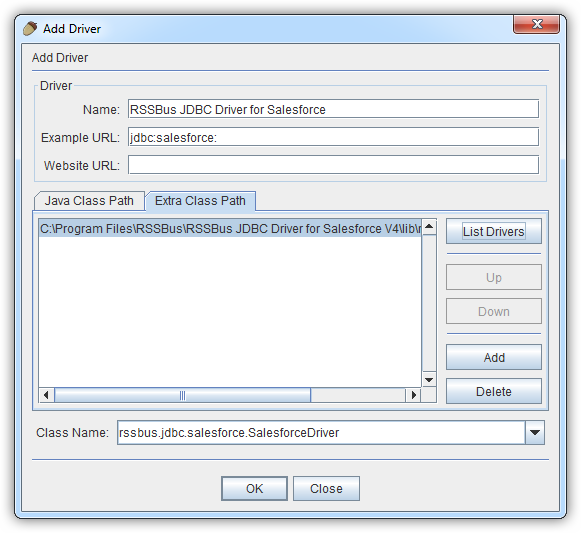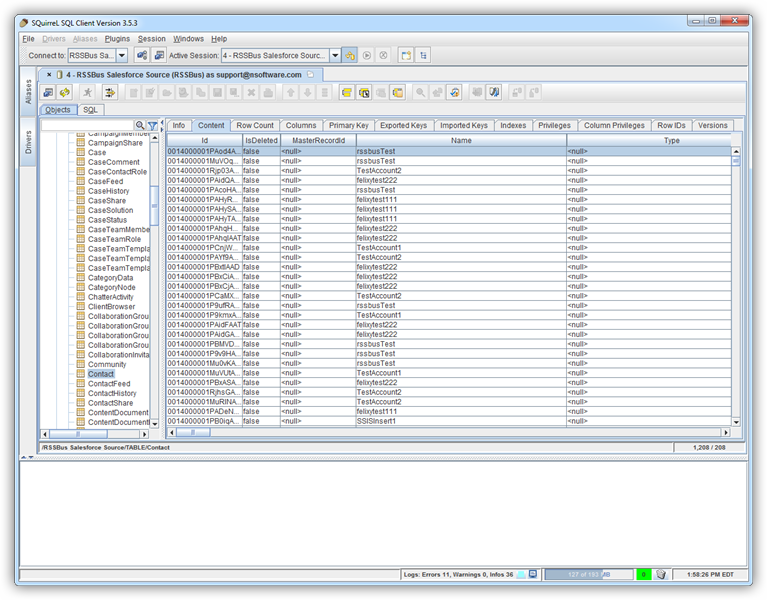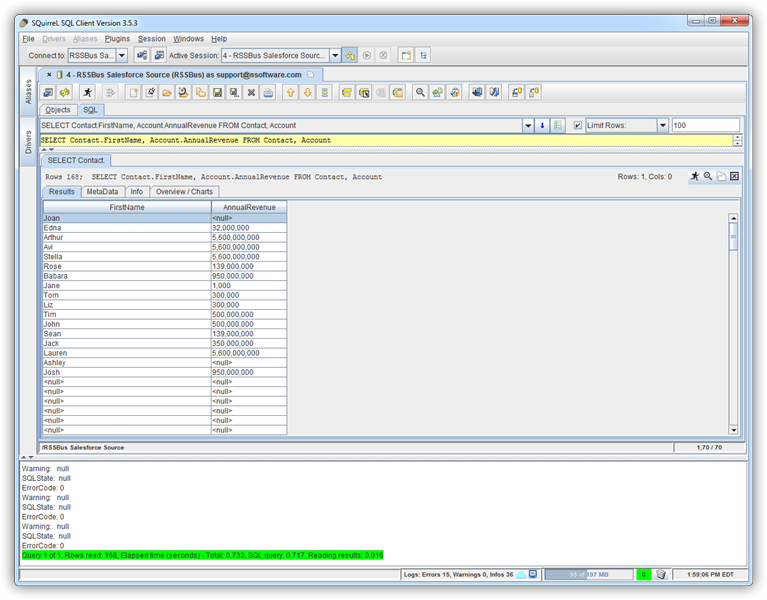Discover how a bimodal integration strategy can address the major data management challenges facing your organization today.
Get the Report →How to connect to Smartsheet Data with Squirrel SQL client
Connect to Smartsheet data and execute queries in the Squirrel SQL Client.
The CData JDBC Driver for Smartsheet enables you to execute queries to Smartsheet data in tools like Squirrel SQL Client. In this article, you will create a JDBC data source for Smartsheet data and execute queries.
About Smartsheet Data Integration
CData provides the easiest way to access and integrate live data from Smartsheet. Customers use CData connectivity to:
- Read and write attachments, columns, comments and discussions.
- View the data in individuals cells, report on cell history, and more.
- Perform Smartsheet-specific actions like deleting or downloading attachments, creating, copying, deleting, or moving sheets, and moving or copying rows to another sheet.
Users frequently integrate Smartsheet with analytics tools such as Tableau, Crystal Reports, and Excel. Others leverage our tools to replicate Smartsheet data to databases or data warehouses.
Getting Started
Add the JDBC Driver for Smartsheet
Follow the steps below to add the driver JAR.
- In Squirrel SQL, click Windows -> View Drivers.
- Click the plus icon to open the Add Driver wizard.
- In the Name box, enter a user-friendly name for the driver; for example, CData JDBC Driver for Smartsheet.
- In the Example URL box, enter jdbc:smartsheet:
- In the Extra Class Path tab, click Add.
- In the file explorer dialog that opens, select the JAR file for the driver, located in the lib subfolder of the installation directory.
- Click List Drivers to populate the Class Name menu with the class name for the driver, cdata.jdbc.smartsheet.SmartsheetDriver.

Define Connection Properties
Follow the steps below to save connection properties in the driver alias.
- Click Windows -> View Aliases.
- In the pane that lists the aliases, click the plus icon.
In the Add Alias wizard that opens, the following fields are required for the JDBC driver:
- Name: Enter a name for the alias; for example, CData Smartsheet Source.
- Driver: Select the CData JDBC Driver for Smartsheet.
- URL: Enter jdbc:smartsheet:
![The alias definition, containing the connection parameters. (Salesforce is shown.)]()
- If you want to define any additional properties, click Properties.
- In the Driver properties tab of the dialog that appears, select the Use driver properties checkbox.
- In the Specify column, select the checkboxes for the required connection properties.
Smartsheet uses the OAuth authentication standard. To authenticate using OAuth, you will need to register an app to obtain the OAuthClientId, OAuthClientSecret, and CallbackURL connection properties.
However, for testing purposes you can instead use the Personal Access Token you get when you create an application; set this to the OAuthAccessToken connection property.
Below is a typical connection string:
jdbc:smartsheet:OAuthClientId=MyOauthClientId;OAuthClientSecret=MyOAuthClientSecret;CallbackURL=http://localhost:33333;InitiateOAuth=GETANDREFRESH![Connection properties automatically detected by Squirrel SQL. (Salesforce is shown.)]()
- In the dialog that appears after you click OK, click connect to test the connection.
Discover Schemas and Query Smartsheet Data
After the metadata has loaded, a new tab for the Smartsheet data source is displayed. On the Objects subtab, you can discover schema information, such as the available tables and views.

To view table data, select the table on the Objects tab. The table data is then loaded in a grid on the Content tab.

To execute an SQL query, enter the query on the SQL tab and then click Run SQL (the runner icon). For example:
SELECT TaskName, Progress FROM Sheet_Event_Plan_Budget








